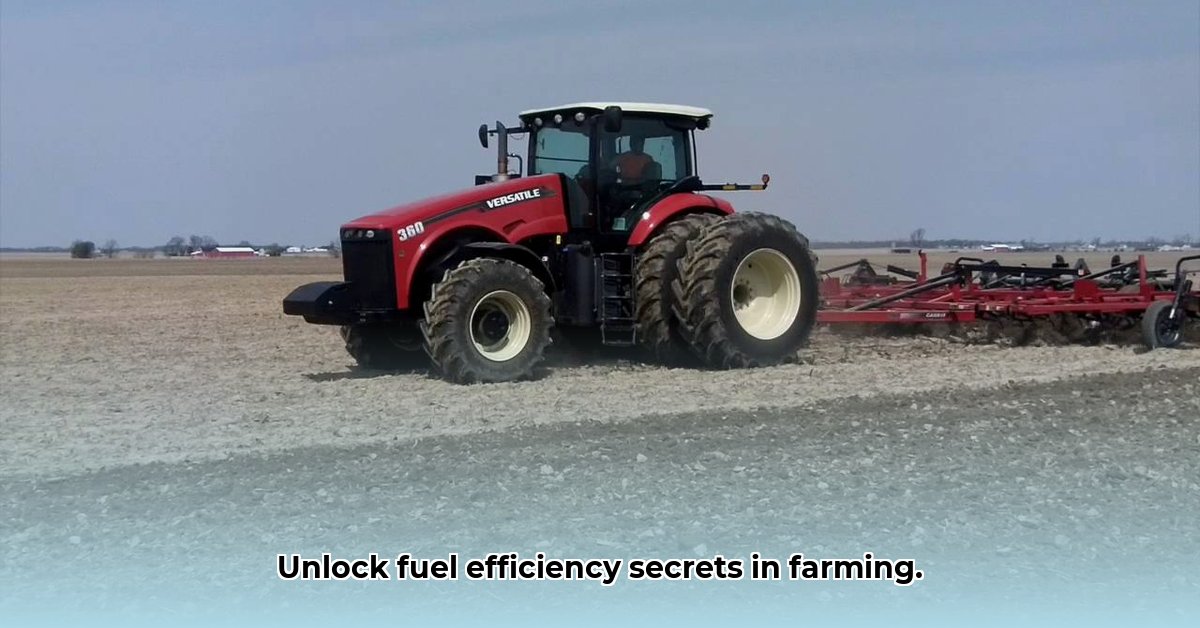
This article clarifies the often-confused terminology surrounding 4WD (Four-Wheel Drive) and MFWD (Mechanical Front-Wheel Drive) tractors, focusing on their implications for sustainable agricultural practices. We will analyze their functional differences, environmental impact, and provide actionable recommendations for various stakeholders. For more on tractor weight distribution, see this helpful resource: Tractor Ballast Information.
Understanding the 4WD vs. MFWD Tractor Debate
The terms "4WD" and "MFWD" are frequently used interchangeably, leading to confusion. Historically, a key differentiator was tire size, with MFWD tractors typically having larger rear tires. However, modern designs blur this distinction. The critical difference lies in how power is distributed to the wheels.
How Power Distribution Impacts Fuel Efficiency and Traction
A 4WD tractor, similar to a powerful but less fuel-efficient vehicle, delivers power to all four wheels constantly. This provides superior traction in demanding conditions but results in higher fuel consumption. Conversely, an MFWD tractor operates more efficiently; the engine primarily powers the rear wheels, engaging the front wheels only when additional traction is required—for instance, while climbing hills or navigating muddy terrain. This "on-demand" system optimizes fuel usage. Does this "on-demand" power make MFWD tractors significantly more fuel-efficient than their 4WD counterparts? Studies show substantial fuel savings potential, though precise figures vary considerably depending on factors like specific tractor models, soil conditions, and operational demands.
Environmental Impact: Soil Health and Greenhouse Gas Emissions
Sustainable farming prioritizes soil health. Heavy 4WD tractors, constantly powering all four wheels, contribute to soil compaction. This reduces water infiltration and aeration, negatively impacting plant growth. The reduced traction provided by MFWD tractors often correlates with less soil compaction compared with 4WD. This translates to a gentler approach to soil management and improved sustainability. Furthermore, the enhanced fuel economy of MFWD tractors leads to lower greenhouse gas emissions, further aligning with sustainable farming goals. The precise extent of these benefits necessitates more comprehensive research, especially considering variations in soil types and operational conditions.
Comparative Analysis: MFWD vs. 4WD Tractors
The table below summarizes key differences between MFWD and 4WD tractors. Remember, these are general trends; actual performance varies based on factors such as specific tractor model, terrain, and operational demands. Always consult individual tractor specifications for accurate comparisons.
| Feature | MFWD Tractor | 4WD Tractor |
|---|---|---|
| Traction | Excellent in most conditions; may require additional weight in extreme situations | Superior in extremely challenging conditions |
| Fuel Efficiency | Generally higher | Generally lower |
| Maneuverability | Generally better | Potentially less nimble |
| Soil Compaction | Typically lower | Typically higher |
| Initial Cost | Variable, often comparable to 4WD | Variable, often comparable to MFWD |
| Maintenance | Potentially lower, fewer moving parts | Potentially higher |
Actionable Recommendations for Sustainable Farming
Here's how various stakeholders can contribute to more sustainable farming through informed tractor choices:
Farmers: Research MFWD models thoroughly; carefully assess fuel consumption data in relation to your specific farm operations. Implementing precision farming techniques, such as GPS-guided equipment, can further optimize fuel efficiency.
Equipment Dealers: Provide clear and detailed information regarding tractor specifications, emphasizing the relative fuel efficiency and soil compaction implications of MFWD and 4WD models.
Researchers: Develop standardized methods for measuring soil compaction to facilitate more precise comparisons between tractor types and their impact on long-term soil health.
Policy Makers: Support research into sustainable farming practices and incentivize the adoption of fuel-efficient farming equipment through policy mechanisms such as subsidies or tax incentives.
Conclusion: Choosing the Right Tractor for Your Farm
Selecting the optimal tractor hinges on your farm's specific needs and operational context. Avoiding jargon and engaging in thorough research will enable informed decision-making, balancing sustainability goals with economic viability. Choosing a fuel-efficient tractor, while considering long-term costs and soil health, is crucial for the future of sustainable agriculture.